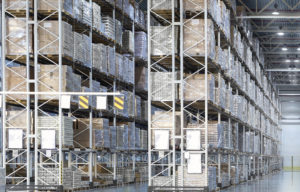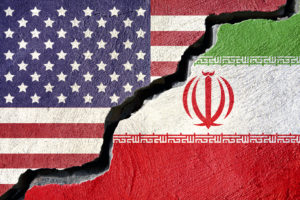News & Insights
Who Will Blink—U.S. or China? U.S. Proposes to Retaliate against China’s Retaliatory Measures
The U.S. appears to be moving deeper into its trade dispute with China. Late in the day on July 11th, the U.S. Trade Representative (USTR) announced that the United States may impose additional 10% ad valorem duties on an entirely new list of Chinese-origin goods valued at $200 billion. The new list covers certain Chinese agricultural goods, chemicals, materials used in building construction projects, and electronics. The USTR’s proposal was issued in response to China’s retaliation against the first round of Section 301 tariffs that took effect on July 6th.
By way of background, the United States decided to impose increased tariffs under Section 301 of the Trade Act of 1974 as the result of an investigation into China’s practice of requiring U.S. companies to transfer their intellectual property rights and technologies to Chinese companies in order to obtain business licenses and approvals to invest in China. The USTR concluded that these practices were unreasonable, discriminatory and restrict U.S. commerce.
The following provides a timeline of the most recent events and developments in the Section 301 saga—
- June 20, 2018: The USTR published a notice in the Federal Register announcing the imposition of the 25% ad valorem duties on certain Chinese-origin products. Affected goods included items classified in over 800 HTSUS subheadings valued at $34 billion—these items are identified in Annex A of the June 20th Federal Register notice. In addition, the USTR also requested public comments on the proposed imposition of additional tariffs on more Chinese-origin goods, which are valued at $16 billion—they are identified in Annex C of the June 20th Federal Register notice. The public comment process for the proposed on the Annex C items is ongoing. See 83 Federal Register 28710, June 20, 2018.
- July 6, 2018: Additional 25% tariffs on the initial group of Chinese-origin (Annex A) products imported into the United States took effect. On the very same day, China retaliated by imposing increased tariffs on U.S.-origin products imported into China. China is now assessing 25% tariffs on U.S.-origin goods classified under 545 Harmonized System subheadings, which include agricultural products, SUVs, electric vehicles, whiskey, dog food and tobacco. China is also threatening to impose tariffs on 114 additional U.S.-origin goods if the U.S. takes further action under Section 301.
- July 10, 2018: The USTR issued a notice of proposed tariffs (10% ad valorem duty rates) on even more Chinese-origin products valued at $200 billion in response to China’s retaliatory action on July 6th.
- July 11, 2011: The USTR published a notice in the Federal Register outlining the procedures and criteria for submitting requests for product exclusions from the Section 301 tariffs that took effect on July 6, 2018. See 83 Federal Register 32181 (July 11, 2018).
Upcoming Deadlines and Key Take-Away’s
The USTR is current seeking public comments on the June 20th proposed tariff increases. Key deadlines are as follows—
- July 23rd: Deadline for submission of comments.
- July 24th: Public Hearing at the International Trade Commission in Washington, D.C.
- July 31st: Deadline for submission of post-hearing rebuttal comments.
The USTR is also currently seeking public comments on the July 10th proposed retaliatory tariff increases, and will hold a public hearing on the proposal. Key deadlines are as follows—
- July 27th: Deadline for filing requests to appear at the public hearing.
- August 17th: Deadline for submission of written comments.
- August 20-23: Public hearing at the International Trade Commission in Washington, D.C.
- August 30th: Deadline for submission of post-hearing rebuttal comments.
The USTR prefers that public comments and rebuttal comments be submitted via the Federal eRulemaking Portal at http://www.regulations.gov.
U.S. companies trying to get their arms around all of these developments should be aware of the following—
- The current and proposed Section 301 tariffs apply only to Chinese-origin goods—they do not apply to Hong Kong-origin or Taiwan-origin goods, even if they are exported from China to the United States.
- Chinese-origin goods that are shipped to the United States from countries other than China are subject to the Section 301 tariffs.
- Upon the entry of covered goods into the United States, U.S. importers must declare the HTSUS classifications that normally apply to the products, as well as the special Section 301 provision (HTSUS 9903.88.01).
- The Section 301 tariffs do not apply to goods that are entered under HTSUS Chapter 98—in these cases, the U.S. importer must declare HTSUS subheading 9903.88.01, the applicable HTSUS Chapter 98 subheading, and the Chapter 1 – 97 HTSUS classification that normally applies to the merchandise in question.
- Section 301 duties are eligible for duty drawback.
- Section 301 duties will apply to covered goods that are entered under free trade agreements or special trade programs.
- With respect to Foreign Trade Zones (FTZs), affected products that enter into a FTZ on or after July 6th (except for those eligible for admission under Domestic Status) must be entered as Privileged Foreign Status (PFS)—they will be subject to the Section 301 duties or any applicable quantitative restrictions upon their withdrawal for consumption. (Note that withdrawals for export from the United States will not be impacted by the Section 301 tariffs.)
Key Strategy Considerations for U.S. Companies
In order to assess the impact of these developments on international supply chains, U.S. companies are urged to carefully review the lists of covered goods. Impacted companies should consider submitting exclusion requests to the USTR. They should also consider reviewing the accuracy of the tariff classifications that are currently used for these goods—there may be valid arguments for their reclassification which could result in their removal from the scope of the Section 301 tariff increases. However, companies should tread carefully here as any sudden classification changes will likely draw the attention of U.S. Customs and Border Protection (CBP). Classification changes should be made only after a thorough legal analysis under the U.S. customs laws and regulations, the HTSUS, and relevant judicial and customs precedents in order to withstand such scrutiny.
U.S. importers of Chinese-origin goods that fall outside of the scope of Section 301 tariffs should still expect some degree of scrutiny by CBP. CBP will likely want to investigate whether the Section 301 tariffs are being unlawfully circumvented. The same holds true for U.S. importers of goods that are classified in Section 301-covered tariff classifications but that are sourced from other countries, as CBP will likely scrutinize those shipments to confirm whether illegal transshipment may be occurring.
Of course, it goes without saying that U.S. companies should, if at all feasible, explore sourcing alternatives for the products that are captured by the Section 301 actions.
U.S. companies should also consider submitting public comments and post-rebuttal comments to the USTR. Concerns about the likely impact of the Section 301 actions on U.S. companies and the economy should be voiced loudly—for example, the key decisionmakers should be made aware of any current and anticipated disruptions in supply chains, the impact of Section 301 actions on U.S. manufacturing operations and U.S. jobs, examples of price-gouging by some non-Chinese suppliers of covered products, and so on.
This continues to be an incredibly fluid situation, and U.S. companies should continue closely monitoring the Section 301 actions that have been taken and those that are threatened. It appears that this game of chicken will continue on for at least a little while longer.
Melissa Proctor is the founder of Miller Proctor Law PLLC, an international trade law firm located in Scottsdale, Arizona. For more than twenty years, she has advised companies on the full of array of international trade issues, imports, exports, embargoes and economic sanctions, anti-corruption compliance, and other agency requirements that impact the cross-border movement of goods, information and services. She may be reached at melissa@millerproctorlaw.com.
News & Insights

NAFTA Is Dead – Long Live the “U.S. – Mexico Trade Agreement” in Principle?
Today, the Office of the U.S. Trade Representative (USTR) announced that the United States and Mexico reached a “preliminary agreement in principle,” subject to finalization and implementation, to update the North America Free Trade Agreement (NAFTA). The USTR stated that

CBP Proposes to Begin Disclosing Details of Imported Counterfeit Merchandise that Has Been Voluntarily Abandoned to Registered Trademark Owners
On August 27th, U.S. Customs and Border Protection (“CBP”) published a Notice of Proposed Rulemaking in the Federal Register to amend Sections 127 and 133 of the Customs Regulations to permit the notify trademark owners, whose trademarks have been registered


